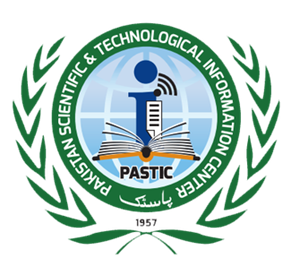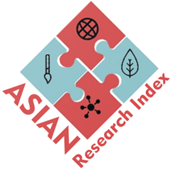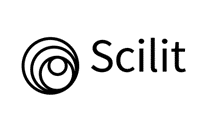The Future of Personalized Medicine
Advancing Precision Healthcare Through Personalized Medicine
DOI:
https://doi.org/10.69750/dmls.01.07.084Keywords:
personalized medicine, genomics, artificial intelligence, digital twins, precision healthcareAbstract
It is the era of personalized medicine, ushering us into a new healthcare era of treatment based on the individual characteristics of each. Using advances in genomics, artificial intelligence (AI), and multi-omics technologies, this revolutionary approach promises diagnosis, prevention, and treatment strategies that go far beyond the “one size fits all” model of the past[1].
From Genomics to Multi-Omics: The Precision Healthcare Foundation
The completion of the Human Genome Project was a major step forward in modern medicine, unveiling the sequence of the genetic code that defines each of us. However, the human genome was not the end of the story. With the advent of personalized medicine, we define it through its multi-omics nature, which integrates genomics, transcriptomics, proteomics, metabolomics, and the microbiome. These layers of data give us an understanding of the biological mechanisms driving disease that allow targeted intervention[2].
For instance, genetic biomarkers have made a sea change in oncology. Targeted therapies improve the outcome in breast cancer (e.g. BRCA1/BRCA2) and lung cancer (e.g. mutant EGFR) by detecting such mutations in genomic profiling. Likewise, technologies such as liquid biopsy are advancing cancer care by providing real-time monitoring of circulating tumor DNA without invasive monitoring[3].
Artificial Intelligence and Digital Twins: Accelerating Progress
AI and machine learning have become the new indispensable tools for personalized medicine. However, the vastness of datasets, such as genetic profiles, electronic health records (EHRs), and wearable device data, can be analyzed by AI algorithms to predict disease risks, advise treatments, and optimize clinical decision-making. For example, AI-driven models have shown themselves capable of detecting breast cancer with similar accuracy to radiologists, identifying new biomarkers for the prediction of disease, and personalizing pharmacotherapy[4].
A very exciting advance is digital twins. These are so-called virtual replicas of individual patients who are created using real-time health data, simulations, and predictive models. Digital twins enable healthcare providers to test treatment plans in a virtual environment before applying them in the real world. This innovation reduces risks, shortens clinical trial timelines, and paves the way for truly individualized care[5].
Personalized Medicine in Clinical Practice
Personalized medicine is already being translated into the clinic, albeit at a slower pace. For example, pharmacogenomics helps clinicians optimize drug therapy for an individual’s genetic makeup. Examples include genetic testing-guided dosing of warfarin or the use of targeted therapies in cancers with defined molecular signatures. In addition, smart devices and digital health tools promote continuous health monitoring and allow patients to take an active role in managing their health[6].
Advances in genomics are allowing us to identify people at high risk for cardiovascular disorders, or diabetes, among other diseases, and intervene before the problems happen. For example, BRCA1 mutation carriers have taken proactive steps, like Angelina Jolie has, to mitigate breast and ovarian cancer risks[7].
Challenging Issues and Ethical Issues
The promise of personalized medicine has not gone unchallenged. First, it is still expensive for many healthcare systems to perform multi-omics analysis, AI tools, and genetic testing. If we don’t address equity in access, health disparities will continue to widen[8].
Second, these massive amounts of data are problematic because of the problems those data create around privacy, security, and ethical use. Strong policies and regulations must cover the issue of informed consent and data ownership, as well as protection against the misuse of genetic information[9].
Clinicians and patients alike need to be educated and trained on the many facets of personalized medicine. Streamlined workflows, interoperable health systems, and clinical guidelines are needed for integration into routine care[10].
The Road Ahead: Personal, Predictive, Preventive
Technology, as well as our increased knowledge of biology, is the future of personalized medicine. If you keep investing in genomics, AI, and digital tools we are about to enter a world where disease prevention, early detection, and targeted treatment are the norm[11].
This is really future enabled by truly personalized health, predictive health through advanced models to predict health outcomes, and preventive health to prevent before a disease strikes. The future holds the promise not only of improved individual health outcomes but a more efficient, less costly, more equitable healthcare system on a global scale[12].
Conclusion
In a future of personalized medicine, we have enormous promise from technological advances and a greater understanding of human biology. The move towards more precise, efficient, and patient-centric healthcare is seeing these integrated with genomic variation, AI, and digital tools. However, to get to this future, there are issues of accessibility, ethical issues, and data security. As we stand on the cusp of a new era, we can not achieve personalized medicine without collaboration between researchers, clinicians, policymakers, and technologists. By doing this, not only will we improve individual health outcomes, but we will also change the global healthcare landscape for generations to come.
Downloads
References
Vicente AM, Ballensiefen W, Jönsson J-I. How personalised medicine will transform healthcare by 2030: the ICPerMed vision. Journal of Translational Medicine. 2020;18(1):180.doi: 10.1186/s12967-020-02316-w
Johnson KB, Wei WQ, Weeraratne D, Frisse ME, Misulis K, Rhee K, et al. Precision Medicine, AI, and the Future of Personalized Health Care. Clin Transl Sci. 2021;14(1):86-93.doi: 10.1111/cts.12884
Patrinos GP, Sarhangi N, Sarrami B, Khodayari N, Larijani B, Hasanzad M. Using ChatGPT to predict the future of personalized medicine. The Pharmacogenomics Journal. 2023;23(6):178-84.doi: 10.1038/s41397-023-00316-9
Primorac D, Ciechanover A. Personalized medicine: the future is here. Croat Med J. 2024;65(3):169-73.doi: 10.3325/cmj.2024.65.169
Vallée A. Envisioning the Future of Personalized Medicine: Role and Realities of Digital Twins. J Med Internet Res. 2024;26:e50204.doi: 10.2196/50204
Pavez Loriè E, Baatout S, Choukér A, Buchheim J-I, Baselet B, Dello Russo C, et al. The Future of Personalized Medicine in Space: From Observations to Countermeasures. Frontiers in Bioengineering and Biotechnology. 2021;9.doi: 10.3389/fbioe.2021.739747
You K, Wang P, Ho D. N-of-1 Healthcare: Challenges and Prospects for the Future of Personalized Medicine. Frontiers in Digital Health. 2022;4.doi: 10.3389/fdgth.2022.830656
Barker RW. Is Precision Medicine the Future of Healthcare? Personalized Medicine. 2017;14(6):459-61.doi: 10.2217/pme-2017-0060
Tarkkala H, Helén I, Snell K. From health to wealth: The future of personalized medicine in the making. Futures. 2019;109:142-52.doi: https://doi.org/10.1016/j.futures.2018.06.004
Johnson KB, Wei W-Q, Weeraratne D, Frisse ME, Misulis K, Rhee K, et al. Precision Medicine, AI, and the Future of Personalized Health Care. Clinical and Translational Science. 2021;14(1):86-93.doi: https://doi.org/10.1111/cts.12884
Denny JC, Collins FS. Precision medicine in 2030—seven ways to transform healthcare. Cell. 2021;184(6):1415-9.doi: https://doi.org/10.1016/j.cell.2021.01.015
Meiliana A, Mustika N, Wijaya A. Personalized Medicine: The Future of Health Care. The Indonesian Biomedical Journal. 2016;8.doi: 10.18585/inabj.v8i3.271






















